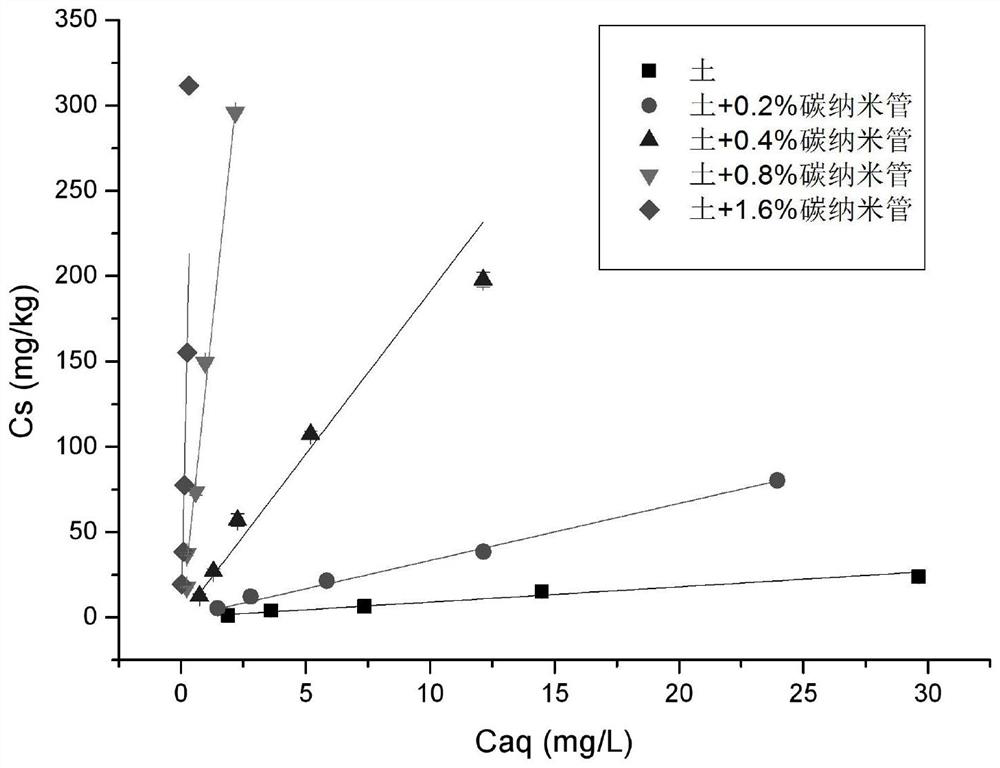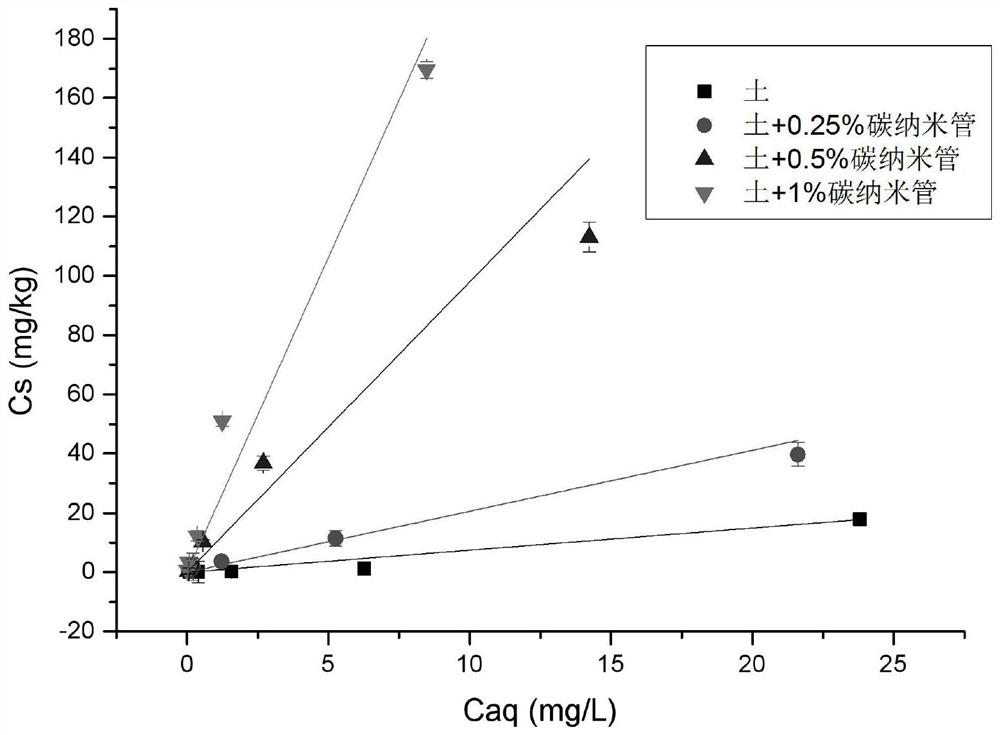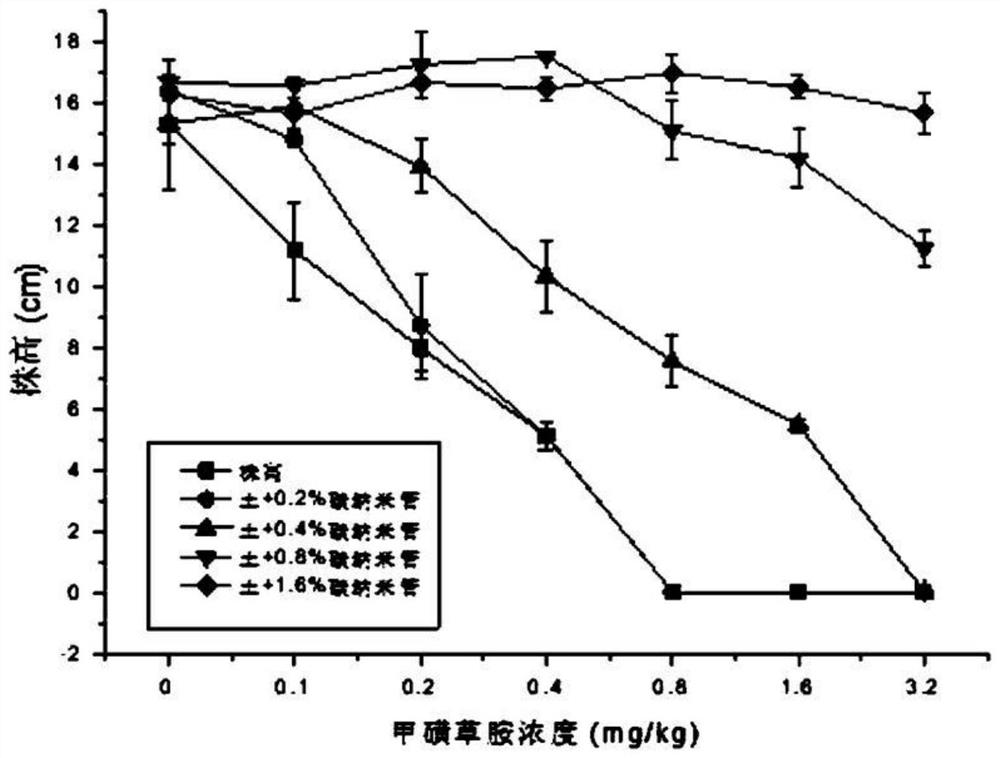A method for preventing and controlling the phytotoxicity of crops by carbon nanotubes by residual herbicides
A carbon nanotube and multi-wall carbon nanotube technology, applied in the field of herbicides, can solve problems such as phytotoxicity, and achieve the effects of crop growth promotion, strong adsorption capacity, and good repair effect
- Summary
- Abstract
- Description
- Claims
- Application Information
AI Technical Summary
Problems solved by technology
Method used
Image
Examples
Embodiment 1
[0034] 1. The adsorption of MWCNTs to sulfentrazone / quinclorac is detected, and an adsorption isotherm is established; it specifically includes the following steps:
[0035] 1) Prepare standard solution of sulfentrazone: 2, 4, 8, 16, 32mg / L, standard solution of quinclorac: 0.1, 0.4, 1.6, 6.4, 25.6mg / L, set 3 repetitions for each concentration, Measure the peak area with a high performance liquid chromatograph, and establish a concentration-peak area coordinate system;
[0036] The chromatographic detection conditions for sulfentrazone are:
[0037] Column: 4.6mm(id)×250mm, Eclipse XDB-C18, particle size 5μm)
[0038] Mobile phase: methanol: water (0.1% formic acid) = 70:30
[0039] Flow rate: 1mL·min -1
[0040] Detection wavelength: 240nm
[0041] Injection volume: 10μL
[0042] Column temperature: 30℃
[0043] According to the regression equation fitted by the results of HPLC detection, Y represents the peak area, x represents the concentration of sulfentrazone,
[...
PUM
| Property | Measurement | Unit |
|---|---|---|
| wavelength | aaaaa | aaaaa |
| wavelength | aaaaa | aaaaa |
Abstract
Description
Claims
Application Information
 Login to View More
Login to View More - R&D
- Intellectual Property
- Life Sciences
- Materials
- Tech Scout
- Unparalleled Data Quality
- Higher Quality Content
- 60% Fewer Hallucinations
Browse by: Latest US Patents, China's latest patents, Technical Efficacy Thesaurus, Application Domain, Technology Topic, Popular Technical Reports.
© 2025 PatSnap. All rights reserved.Legal|Privacy policy|Modern Slavery Act Transparency Statement|Sitemap|About US| Contact US: help@patsnap.com



